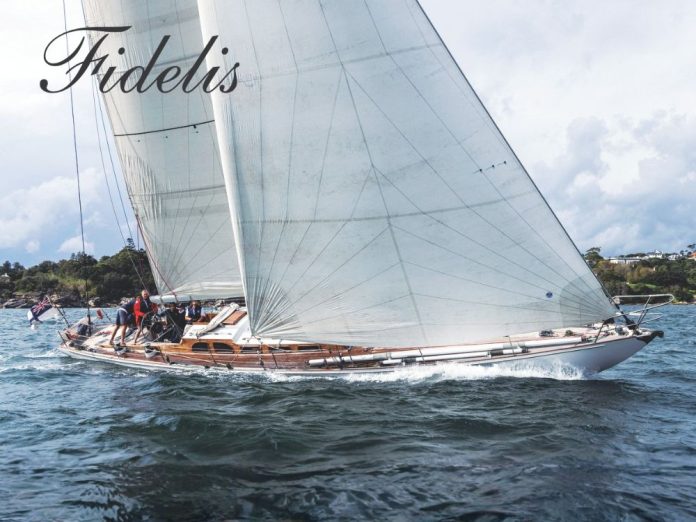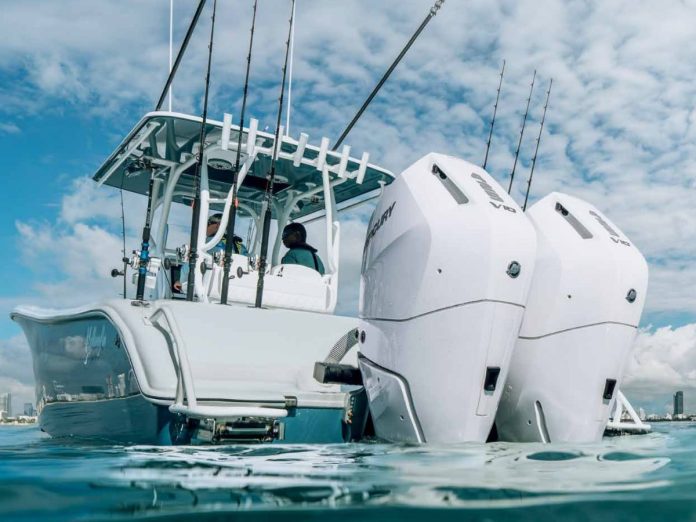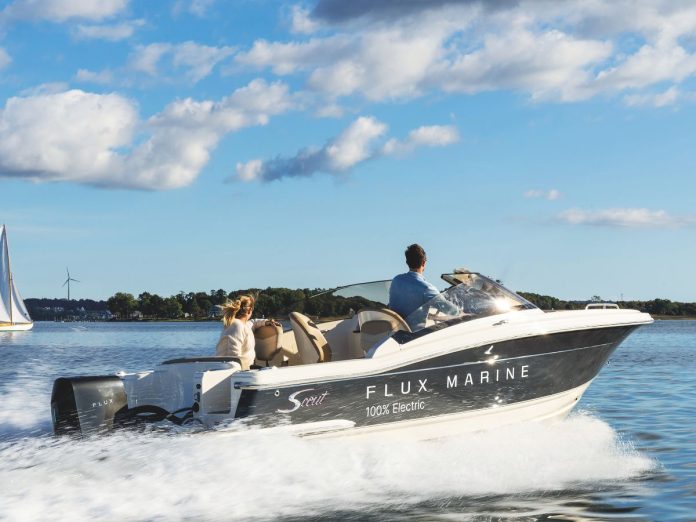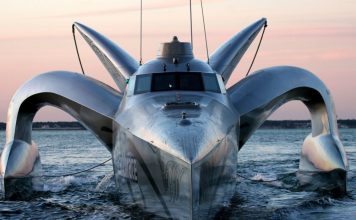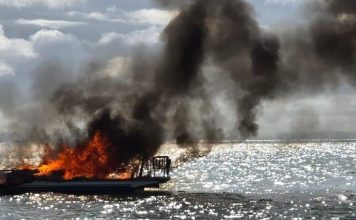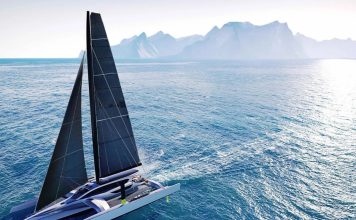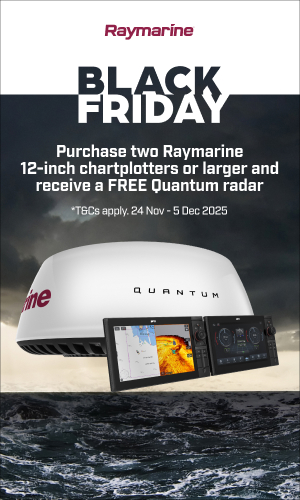Designing bespoke boats can be a tricky business because it also demands skills they don’t teach in design school. A designer must be a guide, counsellor, confidant and commercial sage, with the ability to translate dreams into reality without triggering financial or emotional meltdowns. Auckland designer Roger Hill knows this better than most. Story by Lawrence Schäffler.
One of the country’s foremost designers, Hill’s track record spans nearly half a century and his vessels can be found in marinas all over the world. They feature both sail and power, but it is perhaps his sleek power cats – many foil-assisted – for which he is best-known.
Ironically, for someone who should justifiably be pondering the subtleties of rose-pruning, Hill’s busier than ever. So it’s fortunate he still relishes the challenge of turning a client’s aspirations into something tangible, affordable and beautiful.
Where does a ‘design conversation’ begin?
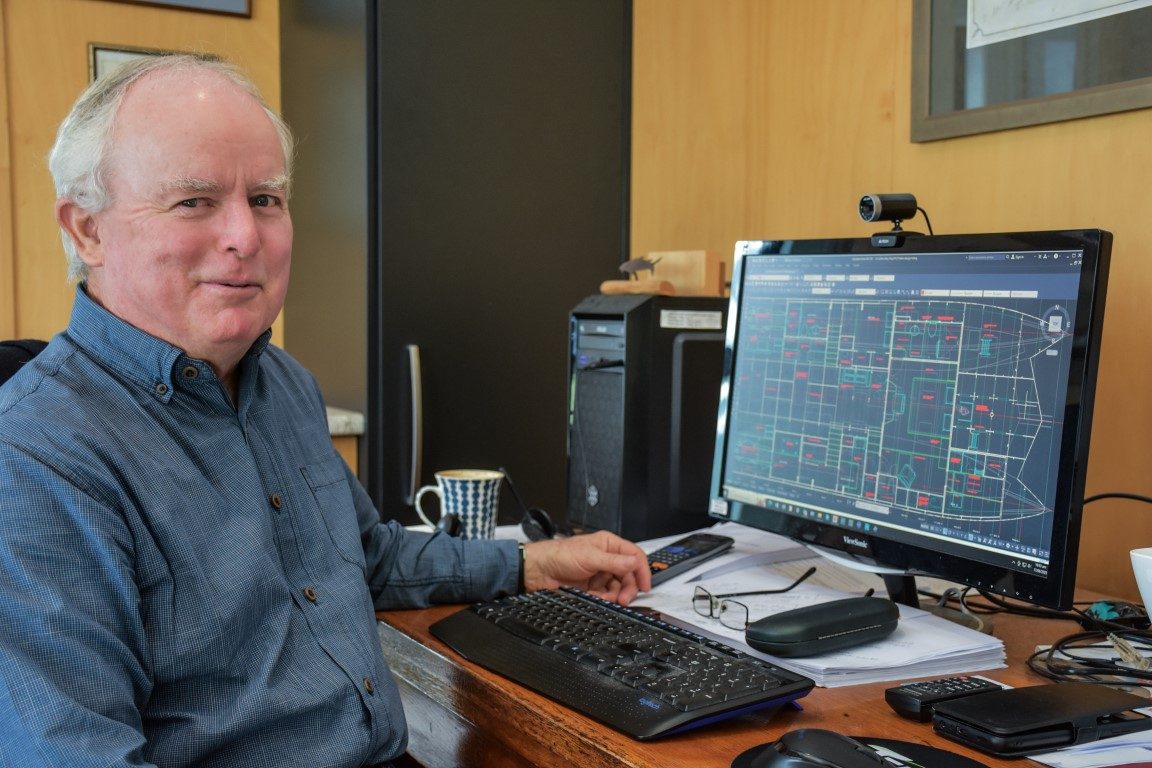
“There’s no magical formula,” is his wry observation. “Every client is unique and every conversation follows a different trajectory. Very few arrive with a brief. They tend to sit down and begin talking – some have very clear ideas – others wave their hands a lot. There’s only one commonality – they don’t want a production boat. They’re after a custom creation tuned to their desires and vision.”
Getting to the nub of a client’s vision, he concedes, is rarely a straightforward journey. There are details he likes to address right at the beginning. “My first question is: ‘What’s the budget?’ Because it’s counter-productive to develop a design and its estimated build-cost – only for the client to say: ‘Holy crap! I didn’t think it would be that much.’ Establishing the budget is essential.”
He also encourages clients to prepare a detailed brief. “Working with vague ideas carries an inherent danger. If I draw up plans based on an unfocused conversation – and the client doesn’t like it, an awful lot of time and money has been wasted.
“I discovered early on in this business that as soon as something is written down, it becomes tangible. Preparing a brief tends to sharpen the mind and define the wish list. I sometimes take notes and send it back to the client to confirm the design’s scope. Some bring pictures of a style or interior they like – or provide a link to a boat they admire. It all helps. My job is to turn those ideas into a design – flavoured with a healthy dose of pragmatism.”
Compromise
Almost all design conversations, says Hill, are marked by his introduction of the ‘C-word’. “Many clients – especially those with relatively little boating experience – will immediately specify the boat’s desired performance parameters, but don’t understand the compromise equation.
“They have a clear notion of their new vessel’s ideal speed, range, and fuel consumption – but tend to ignore the hull profile. A displacement hull and 30 knots aren’t really compatible. A downtown-apartment-on-the-water is never going to be a speedster.
“As I always point out, there isn’t a boat on the planet that isn’t a compromise – I have to direct their thoughts to something that’s realistic without losing the dream or vision. It’s often a circular kind of conversation.
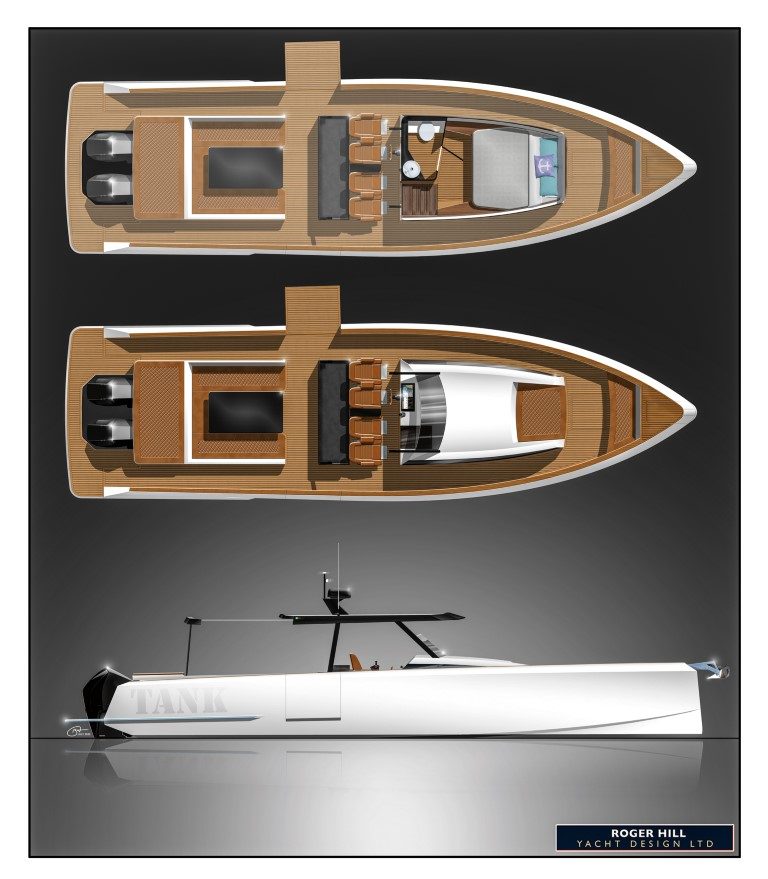
“Part of my job is getting the vision into a tight, clearly defined space. We explore concepts like power-to-weight ratio, engines, cruising speed and range – eventually it all boils down to a choice between a displacement, semi-displacement, or planing hull.”
Material & builders
The conversation also embraces construction and build material – composite, timber, glass or alloy? “Some clients arrive with a preferred builder in mind, which means we must consider the builder’s experience. It’s pointless aiming for a carbon fibre vessel if the builder has never worked with the material. Using a preferred builder is great, but it can dictate the construction method.”
And that also means involving the builder in the design process. “I need to establish how he wants to build the boat. He might be a composite boatbuilder, but there are 10 different ways to build a composite boat. I need to produce drawings to suit his method of construction.
“Will it be a composite kit boat for example, or as basic as a hull sitting on a jig and wrapping glass around it. Does he work with resin infusion? What sort of resin? Is there a laminating table? Does he want the cores cut out? Does he want pre-formed bulkheads? The plans must be tailored to his build methodology. It’s a complicated conversation, but it all feeds back to the design process.

“I also emphasise the cost implications of various construction techniques. Different options have weight saving/performance/cost considerations. An e-glass laminate build will cost X – a carbon laminate build will be much lighter, go faster and further, but will cost a lot more. Does he want to spend the extra money for the performance gains?”
On many occasions, says Hill, the client will elect to put the build out to tender, and that can make things a little more complicated. “The initial plans have to cover a range of construction options – which means I have to provide a fairly detailed ‘preliminary package’ – often with a 3D model.
“But it allows the client to visit various builders to get a cost-estimate. After they’ve picked the builder we get together – the client, builder and me – to discuss any specific needs. I can then go ahead produce a much more detailed design.”
Advances in boat construction methods (and CAD software) have proved to be something of a double-edged sword for designers. “Forty years ago, a design only required around 10 drawings – and of course they were all hand-drawn. Today a decent-sized boat generates about 50 A1 drawings – and they are very detailed.
“While CAD has greatly simplified the process, it’s also created much more work because the drawings are so much more detailed.” Most builders these days, he says, have an A1 printer for producing hard copies of digital files. Many also have CNC-routers, allowing them to cut the frames, bulkheads, hull and deck panels – and so on – from the drawings.
Engines
A fundamental part of the design conversation relates to horsepower and the type of drive train. Speed isn’t entirely a function of horsepower, but more horsepower certainly helps. Shaft drives with tunnels? Pods? Hybrid or electric propulsion – or maybe water jets? This horsepower/driveline conversation, Hill points out, is often impacted by seemingly inconsequential considerations – draught for example.
“A client might have an existing berth with limited depth at low water – that must be factored into the equation. I currently have two large power cats being built (with clients in different countries), one alloy and one composite. Both have foils but one has a height restriction (air draught). It will have to pass beneath a fairly low causeway bridge. The other has a berth that’s very shallow. That latter issue pushed the drive decision to water jets.

The type of propulsion also affects the position of the engines, which in turn impacts on the vessel’s Centre of Gravity (COG). “If we’re aiming for a planing hull, we want the engines mounted as far aft as possible – and that can significantly affect the overall design.
“By contrast, with displacement and semi-displacement hulls you want the engines as far forward as possible. That typically dictates the size of the engine room which in turn affects the interior layout. At the end of the day, the client and I are ‘dancing’ around options, variations, and permutations as we strive for a viable solution. A kind of cha-cha that ends with a compromise.”
CFD
In the good old days, the mark of a conscientious designer was a scale model being put through its paces in a test tank. No longer.
“Tank testing isn’t really used anymore – these days it’s all done virtually with CFD (Computational Fluid Dynamics). CFD is very useful because it quickly gives a client an accurate indication of the boat’s performance under different conditions.
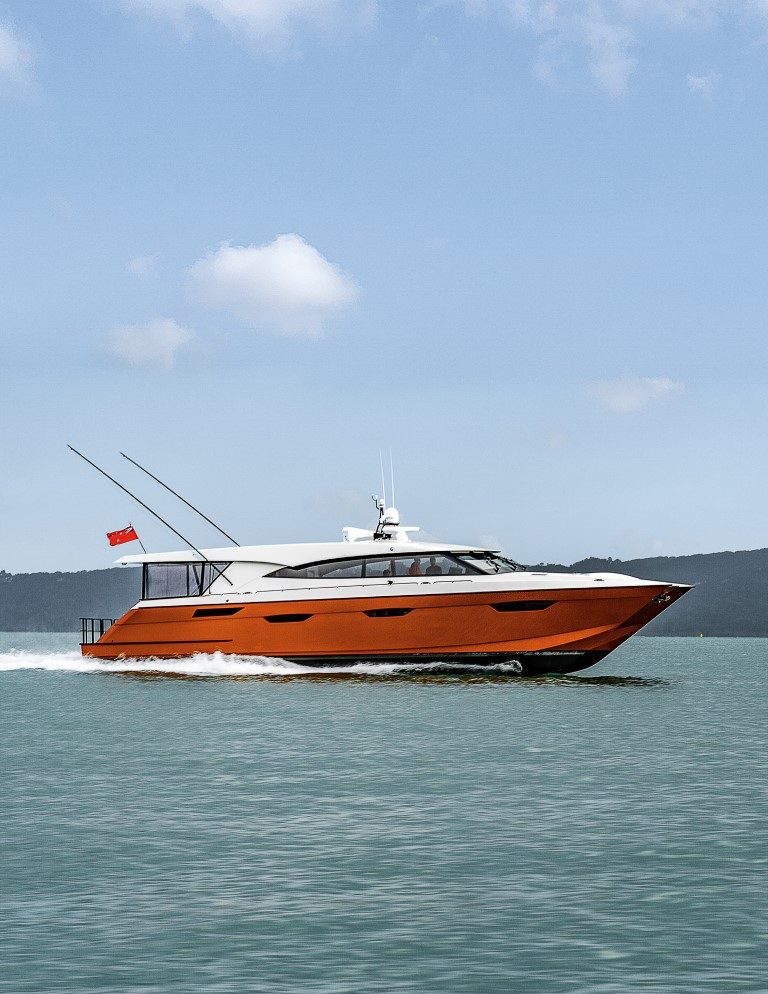
“And it has a particular advantage because it complements the loads of empirical data we’ve gathered over the years. We’ve been using accurate calculation methods for a long time, and it’s become ever more accurate as more designs – with known performance details – are added to the database. But what these calculations can’t do is model sea-keeping performance, wake, and trim angles. CFD can – and it adds a lot of crucial information to the analysis.”
CFD is particularly important for foil-assisted boats, he adds, because the position, size and angle of attack of the foil are precision issues. “They’re not articulated foils – they’re fixed with a predetermined profile. Weight and COG are known entities in the foil equation – with CFD we can run through numerous scenarios and variables until we get it exactly right.”
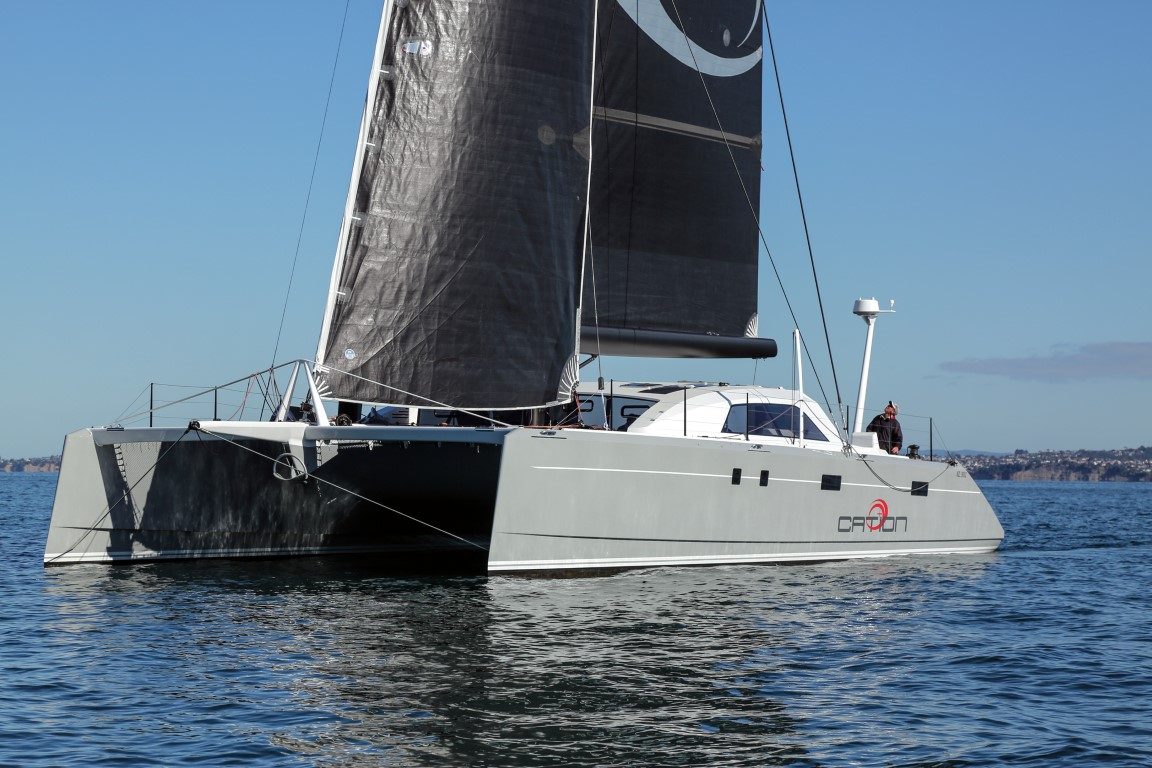
For someone so deeply immersed in the esoteric world of modern boat design, Hill’s own boating preferences are surprisingly modest. He spends quite a bit of time ‘messing about’ in his Townson 35 yacht, but his ideal boat he says, is a small displacement power cat. “They’re good sea-keeping vessels and, in my dotage, perfect for cruising around the Bay of Islands at 12–14 knots.”
Mmmmm – perhaps so, but I’m not sure that ‘dotage’ is a concept that features on Hill’s horizon.













